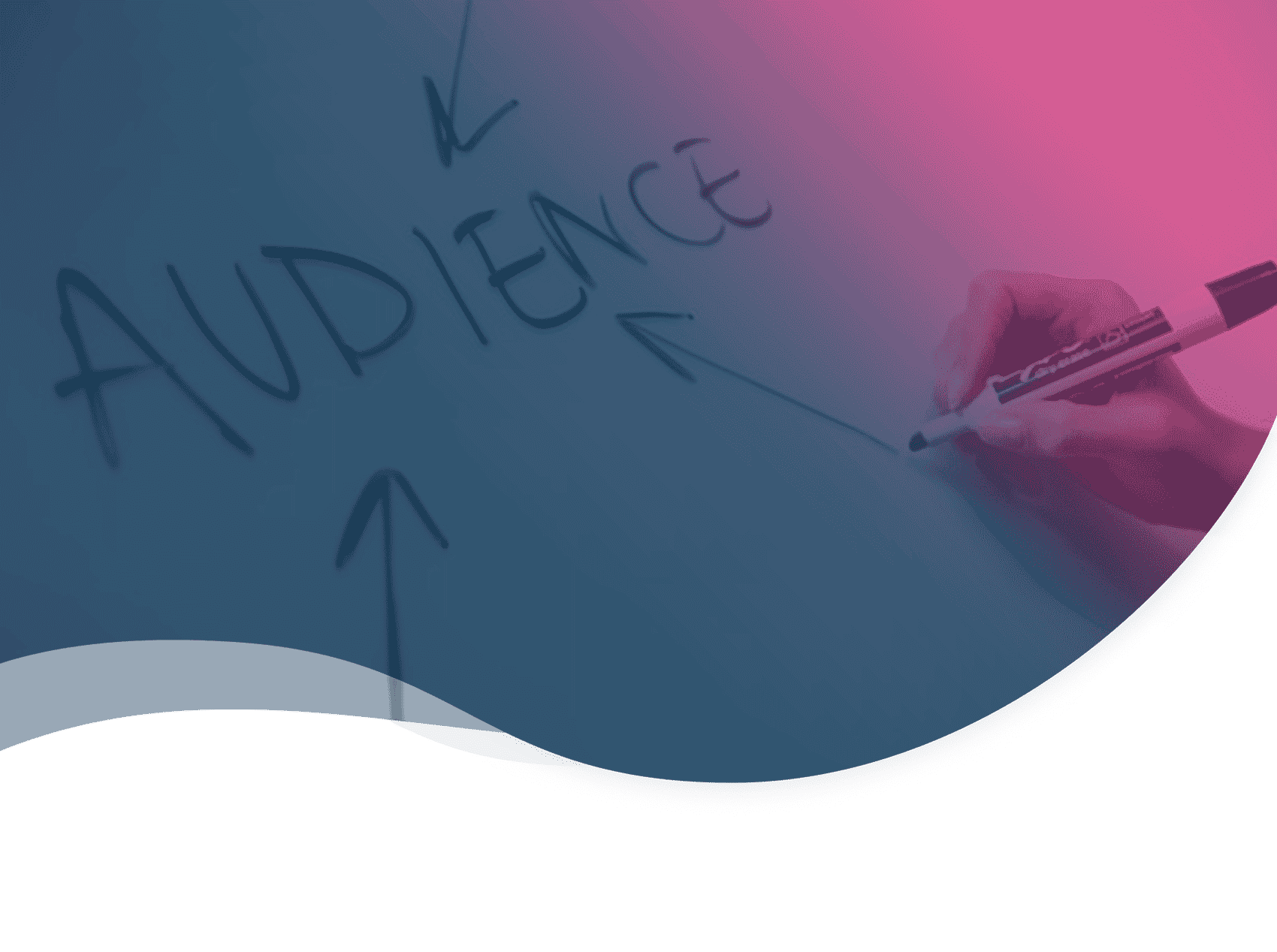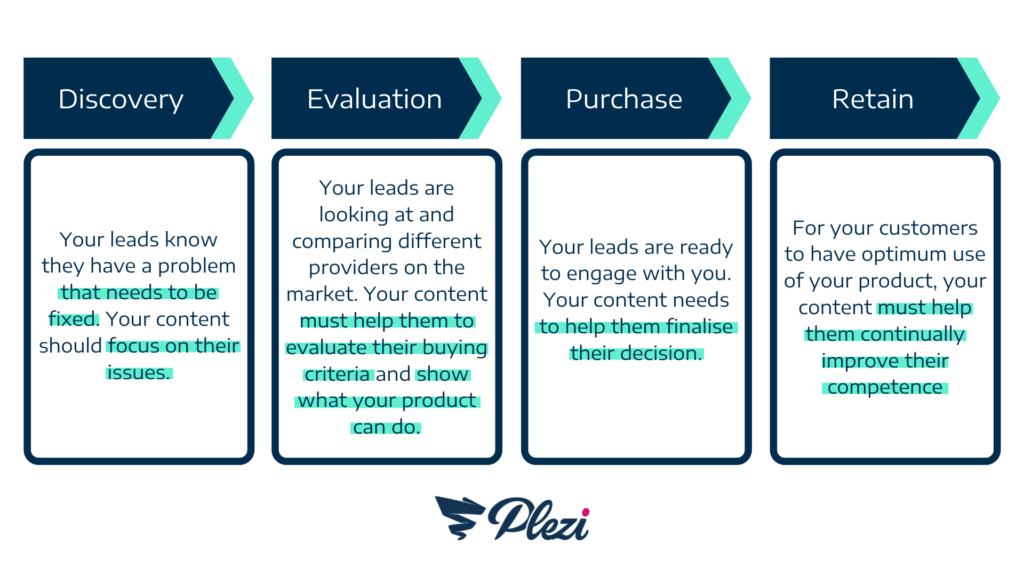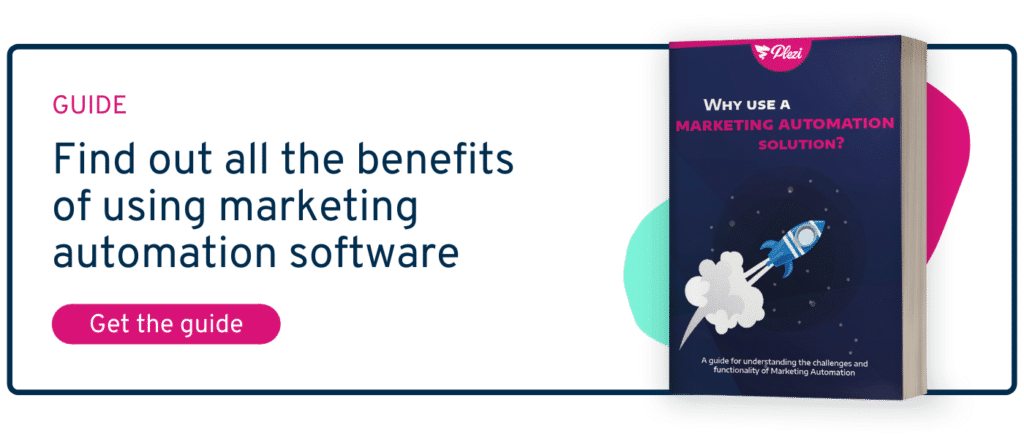The winning formula for a rock-solid inbound marketing strategy is always the same: the right content sent at the right time on the right channel. But to be truly effective at reaching your target audience, you need to add something more: email segmentation.
Let’s say you create an email marketing campaign to reinforce your marketing strategy. The message is good, and the timing seems right. But have you tailored the emails you send to the needs and expectations of your clients?
If the answer is no, it’s time to take action. In the post below, we’ll show you why it’s so important to segment your B2B contact list. We’ll also give you some examples so you can improve the performance of your email marketing campaigns.
1. What is email segmentation?
If you use marketing automation software to automate your email marketing campaigns you’re off to a great start. Software like Plezi frees up valuable time and helps you manage your digital marketing strategy more effectively. It also lets you automate a range of actions, from the sending of emails to reporting and data analysis. This technology can be a huge help, but it still lets you control a key part of your marketing strategy: how you segment your contact list.
Segmenting a B2B email list or contact database involves dividing it into groups with similar characteristics. Email segmentation lets you target your audience more precisely. It does this by identifying different segments of your email list based on specific data or behaviour.
Using email segmentation, you can stop sending mass email marketing campaigns. These use generic emails that aren’t personalized for subscriber profiles. But each of your contacts has different needs and expectations. By having a better idea of what these are, you’ll improve the performance of future campaigns. Email segmentation lets you personalize content, improve your email delivery rate, and provide leads and customers with an experience that’s focused on them. And that’s not all.
2. Why it’s so important to segment your contact list
Let’s imagine your business has a SaaS accounting app. Three new contacts have recently been added to your email list:
| Contact 1 | Contact 2 | Contact 3 |
|---|---|---|
| John Smith, a freelance accountant, signed up to your email list after reading one of your blog posts. For now, he’s interested in receiving free content and tips by email. | Jane Smithson runs a small accounting firm of 20 people. She is interested in one of your pricing plans and has subscribed to your email list to learn more about you. | Janet Smythe is an accounting student. She signed up to your email list with the intention of sending you her CV in a few months’ time. |
These are three different contacts with quite different needs. You need to segment your email list if you want to be able to communicate effectively with all these people. Without doing so, John Smith, Jane Smithson, and Janet Smythe will all receive exactly the same emails. And that’s a huge mistake you want to avoid.
Not segmenting your email list, or not segmenting it correctly, will have a number of consequences:
- The content you send won’t be personalized. This affects both its quality and the conversion rate of your marketing campaigns (e.g., low open and click-through rates, low conversion of leads)
- Contacts will lose interest in your emails and get tired of being just another customer or lead. And your unsubscribe rate will skyrocket as a result.
- Both Internet Service Providers (ISPs) and contacts might mark your emails as spam. That’s a significant blow to your brand’s reputation and makes it harder to deliver emails.
Effective email segmentation, on the other hand, has a positive effect on campaign performance, email delivery, and your brand’s image.
In 2017, Mailchimp compared the results of its campaigns that used segmentation against those that didn’t. Over 11,000 campaigns and nearly 9 million email recipients, the impact of segmentation on email metrics was considerable:
- Open rate: 14.3% higher for segmented campaigns
- Click-through rate: 100.9% higher for segmented campaigns
- Bounce rate: 4.6% lower for segmented campaigns
- Unsubscribe rate: 9.4% lower for segmented campaigns
Segment for better performance. Segment for greater personalization. Segment for improved email delivery. Email segmentation is the key to running successful email marketing campaigns. So, are you ready to get started?
3. How to segment your contact list
According to a study by the Data & Marketing Association (DMA), segmented email marketing campaigns can increase a company’s revenue by up to 760%! But how can you take advantage of the benefits of email segmentation? Just follow our 3-step guide.
- Step 1: Choose a marketing automation tool, like Plezi!
- Step 2: Create a list of contacts which includes all the email addresses that have signed up to receive your emails.
- Step3: In Plezi, choose how you will segment your contact list. This feature lets you include or exclude certain contacts from your email list. Simply select the criteria you want to use to segment your email list. Below, we’ll look at some of the criteria you can use to do this.
4. 6 ways to segment a B2B email list
If you want your email marketing campaigns to be really successful, you need to segment your email list.
But how can you decide on what segments to use? There are a number of different ways you can go about this. Below are six ways to segment a B2B email list, with examples to help you understand how to use them.
1. Segmentation by demographic data
Let’s go back to our previous example. Your business has a SaaS accounting app. The last three contacts who have signed up to your email list include a freelancer, a business owner, and a student. These three different profiles have been identified from demographic data they have provided.
Demographic data can provide a useful way to create a first level of segmentation. A contact’s role or position, for example, can be an effective criterion for segmenting your email lists.
Let’s look at another example. At the “Real Estate for You” event in London (we’ve just invented it!), you’ve collected email addresses from managers of real estate agencies. You could choose to segment your email list based on the role of contacts, their sector, and the location of the event.
You can then create a segment using these three criteria to send them personalized emails that have real context. The messages you send will then be better targeted and feel more personal. This is a good way to gain trust and improve engagement from contacts.
2. Segmentation by behaviour
Each contact who signs up to your email list has a unique relationship with your business. The paths that they take to reach this point are all different. They can also interact with your business in a number of different ways:
- By downloading premium content, like a white paper.
- By taking part in an event, like a webinar.
- By visiting a specific page on your website, like a “solution” or “resources” page.
Each of these actions tells you something about the interests and needs of the contact in question. There are a number of tools available that will help you track and analyse this behaviour. This is something you can easily do in Plezi, for example.
Let’s say that the Plezi marketing team wants to organize a new webinar about creating B2B content in two weeks’ time. We’ll send out email invites to this webinar ahead of time. But we don’t want to send them to our entire list of contacts. We therefore need to segment our email list by behaviour.
All contacts that have downloaded our editorial calendar kit (showing an interest in B2B content marketing), for example, will be sent an email invite to the webinar.
3. Segmentation by how ready contacts are to buy
The B2B marketing funnel consists of 4 main stages:
- Awareness: a lead becomes aware of their problem.
- Evaluation: a lead identifies and compares different products or services.
- Purchase: a lead becomes a customer by making a decision to purchase.
- Retain: the customer is engaged, becoming more loyal to your business.
The expectations of leads (and customers) vary for each of these stages. As does their readiness to buy. So, it’s a good idea to segment your contacts based on how close they are to purchase. This will let you send them content that is appropriate to the stage of the funnel they are in.
Let’s say you’re an agency that creates websites for B2B companies. Using Plezi’s tracking feature, you’ve identified where leads are in the buying cycle.
The next step is to focus on the segment of contacts in the evaluation stage to send them personalized content. This content should educate and guide leads, while positioning your product or service as a solution to their problems. Why not create an email marketing campaign that sends them a white paper called “5 reasons to use an agency to create a successful B2B website”?
At Plezi, we created our Smart Campaign specifically to segment an email list by how ready contacts are to buy. This feature lets you make lead nurturing a priority. Using the Smart Campaign, you can send the riht content to the right leads, based on their interests and position in the buying cycle. What’s more, emails sent as part of a Smart Campaign have an open rate 10% higher and a click-through rate 50% higher than other emails.
4. Segmentation by interest
As the name suggests, segmenting an email list by interest makes use of the interests of your contacts. Are they interested in your products? Your content? By the added value you provide (e.g., the saving of time, money)?
Collecting information about your contacts’ interests is part of buyer persona marketing. You can find out more about buyer persona marketing in our complete marketing persona kit.
It’s easy to segment an email list based on the interests of contacts. In Plezi, you can do this using the interest tag. This feature lets you see what topics your target audience is interested in. You can then segment your email list for a given campaign based on these tags. This is also a great way to better qualify prospects and nurture leads.
Let’s say your business produces a Human Resources Information System (HRIS). Your inbound marketing strategy will naturally address topics like payroll, HR, or employee onboarding.
In Plezi, you can create tags for these keywords (e.g., “payroll”, “HR”, or “onboarding”), and assign them to content. When contacts download or read this content (e.g., blog posts, white papers, webinars), these tags will be added to their contact record in Plezi. This will let you then segment leads based on their interests.
Below is an example of how Plezi content tags are used. “Awareness” is the stage of the buying cycle that this content targets. “Content marketing” and “SEO” are the topics addressed by this content.
In Plezi, each contact has a record that indicates their areas of interest in the form of tags:
If you wanted to create an email campaign around employee onboarding, for example, you can use these tags to segment contacts who are interested in this topic.
5. Segmentation by active / inactive contacts
Up to 50% of contacts in any contact list could be considered inactive. And that means you could be wasting up to 50% of your budget to send emails.
These inactive contacts can also adversely affect email delivery rates and the performance of email campaigns. This is why it’s important to segment contacts based on whether they are active or not.
The first step to doing this involves defining what makes a contact inactive. Every business will probably have their own definition. At Plezi, an inactive contact is an email address that hasn’t opened, clicked on, or replied to one of our emails in the last six months.
If you use a marketing automation tool, you can see the activity of contacts in their interaction history. When sending an email campaign, you can then use this data to exclude those email addresses identified as inactive.
Let’s say that you’re a consulting firm that specializes in digital transformation. You’ve just carried out a nationwide study related to your activity. You’ve decided to create an email marketing campaign to promote this study. But in your email list, there are three different types of inactive contacts:
- Email addresses which are incorrect or misspelled.
- Obsolete email addresses, for example, for B2B employees who have left the company
- Dormant contacts, which are genuine email addresses that show no interest in your content.
At Plezi, we segment our email list to exclude incorrect and obsolete email addresses. Then, we organize a reactivation campaign for those email addresses that have been dormant for six months. This can easily be done in Plezi by creating a workflow.
6. Segmentation by sign-up date
The start of any new relationship is always a bit exciting. And it’s no different in marketing. When a lead spends time on your website and shows interest in your business by downloading content, they might be more receptive to your messages.
You can capitalize on these new relationships with leads in your email marketing campaigns. Segment contacts by the date they signed up to receive your emails. Then, send new subscribers a series of personalized messages.
According to Mailchimp, this type of segmentation has a positive effect on B2B email performance. Segmenting contacts by sign up date results in an open rate 29.6% higher and a click-through rate 51.6% higher than normal.
Imagine you are a vocational training organization. When new clients sign up to use your services.You send them a series of welcome emails, a kit to learn more about your training courses, and an invitation to a webinar presenting your organization.
People only receive this content when they sign up. Plezi lets you easily create a welcome workflow of two or three automated emails to do this.
B2B email segmentation isn’t something you can just make up as you go along. But segmenting your email list in one or more of the six ways described above will make it easy to get started.
Segmenting and optimizing your B2B contact list lets you send contacts more personalized emails. It also makes it easier to move them forward in the buying cycle.






